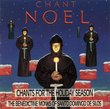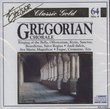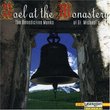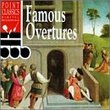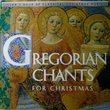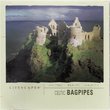| All Artists: The Oxford Girls Choir;Danielle Perret;Richard Vendome Title: A Ceremony of Carols Members Wishing: 0 Total Copies: 0 Label: The Gift of Music Original Release Date: 1/1/2009 Re-Release Date: 12/3/2008 Genre: Classical Style: Opera & Classical Vocal Number of Discs: 1 SwapaCD Credits: 1 UPC: 658592122022 |
Search - The Oxford Girls Choir;Danielle Perret;Richard Vendome :: A Ceremony of Carols
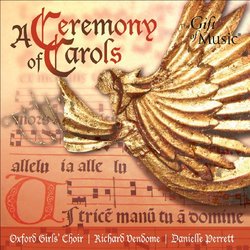 | The Oxford Girls Choir;Danielle Perret;Richard Vendome A Ceremony of Carols Genre: Classical
The angelic voices of the Oxford Girls' Choir, the fine and dramatic harp of Danielle Perrett and organ music played by Richard Vendome in a programme of exciting Christmas music, including Benjamin Britten's stunning 'A C... more » |
Larger Image |
CD Details
Synopsis
Product Description
The angelic voices of the Oxford Girls' Choir, the fine and dramatic harp of Danielle Perrett and organ music played by Richard Vendome in a programme of exciting Christmas music, including Benjamin Britten's stunning 'A Ceremony of Carols' and music from nineteenth-century France. In 1939 Britten and Peter Pears joined W.H. Auden in the United States, but the Bohemian lifestyle he found there did not suit his shy and conservative personality. Although he was a conscientious objector Britten decided to forsake exile and return home onboard the neutral Swedish merchant ship Axel Johnson in the Spring of 1942, a dangerous voyage because U-boat activity was then at its height; whilst at sea he composed two of his finest and best-loved choral works, the Hymn to Saint Cecilia (Op 27, on a text by Auden), and A Ceremony of Carols (Op 28), settings of medieval poems from a book Britten had picked up in Halifax, Nova Scotia. The latter was first performed in the library of Norwich Castle in December 1942 by the women of the Fleet Street Choir, conducted by T.B. Lawrence. Britten is on record as saying that he preferred the words to be pronounced in modern English, as far as possible, so as to be clear to the audience. Simple but refined in melody and structure, dazzling in its colour and poetry, the work combines voices and harp with a sureness of touch rarely heard in modern choral music. Joy and sadness, excitement and serenity, spring warmth and winter frost are all distilled herein. Gabriel Urbain Fauré (1845-1924) was the leading French composer of his age, whose original melodic and harmonic style paved the way for the language of Debussy and his contemporaries. As a boy he attended the École Niedermeyer, studying with Saint-Saëns, among others. In 1871 he formed the Societé Nationale de Musique, together with Chabrier and Duparc, and this gave him a platform for the premières of new works. He was a regular performer at Saint-Saëns' salon, succeeding him as choirmaster at the Église de la Madeleine in 1877; in 1896 he became organist there and took over from Massenet as professor of composition at the Paris Conservatoire, where his students included Maurice Ravel and Nadia Boulanger. Fauré succeeded Dubois as Director of the Conservatoire in 1905, finally retiring due to deafness in 1920. Le Ruisseau, dating from 1881, is a rarely heard but exquisite setting of an anonymous text for female voices and soprano soloist. Maria, mater gratiae was probably composed as a Benediction hymn for the choir of the Madeleine in 1888; it also exists in a version for male voices. En prière sets a text by Bordèse and dates from the following year. Alexandre Pierre François Boëly was born in 1785 and died 150 years ago on 27th December 1858. He received his first musical instruction from his father, a singer at Saint-Chapelle in Paris and harpist at the court of Versailles, and went on to study violin and piano at the Paris Conservatoire. During the early 19th century he cultivated an old-fashioned but attractive style as a composer, making a special study of Bach, Haydn and Mozart. But although his work was admired by composers such as Franck and Saint-Saëns, such high taste was no longer appreciated in Parisian society or by the clergy of St Germain-l'Auxerrois, where he was organist from 1840; he was obliged to resign his post there in 1851 and spent the rest of his days working as a piano teacher. In the Andante con moto and Allegretto Pastorale we hear Boëly's lighter style, but the Préludes sur des Cantiques de Denisot are clearly based on Bach's Orgelbüchlein, composed 130 years earlier. Boëly took his melodies from the Cantiques du Premier Advenement de Iesu-Christ, unaccompanied songs on the subject of the Nativity published by "le Conte d'Alsinois", the anagrammatic pseudonym of Nicolas Denisot (1515-59).
Similarly Requested CDs
| GREGORIAN CHORALE Genre: Classical Label: Excelsior | |
| Janez Bole Gregorian Chant Genre: Classical Label: Pilz | |

 Track Listings (27) - Disc #1
Track Listings (27) - Disc #1